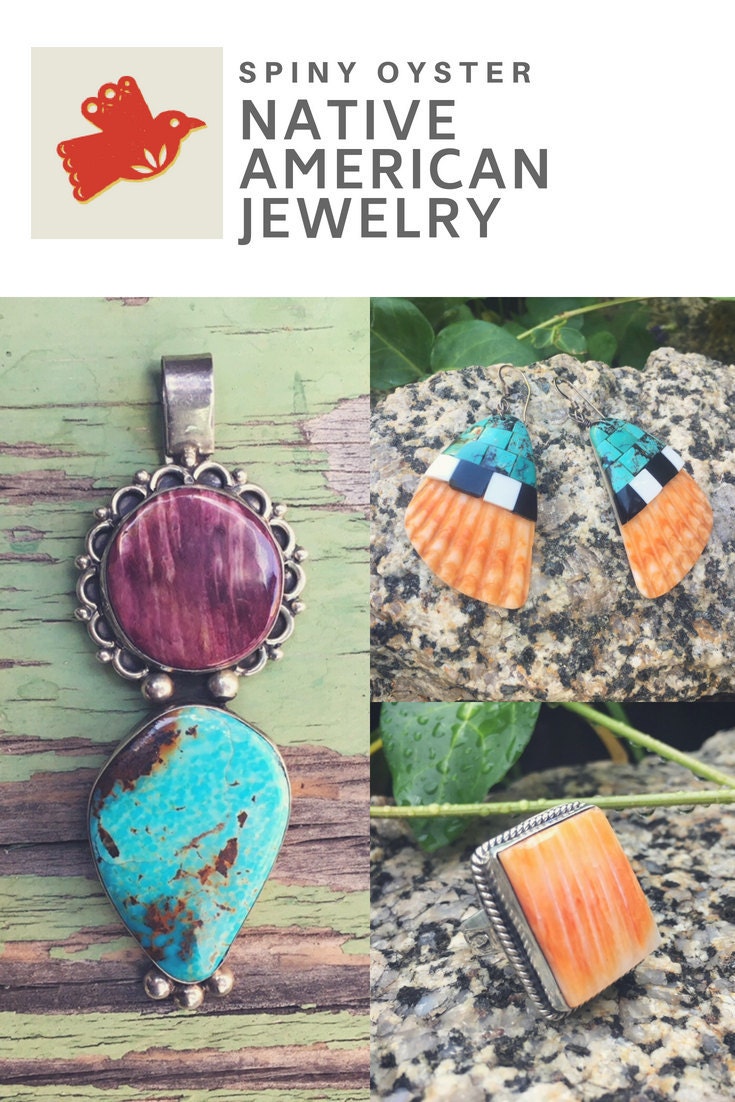Spiny oyster is a Spondylus used in jewelry making, and it is common in Native American jewelry. Some people call it a gemstone or stone, but it comes from the bivalve mollusk shell, and it's found in warm waters like those in the Gulf of Mexico and along the coasts of North American and the waters of South America. Other bivalve mollusks are clams, oysters, scallops, mussels, and cockles, and like these, the meat of the spiny oyster is soft and edible.
Spiny oyster, when alive, is in fact very spiny. But when polished, the shell is smooth and can be used in a variety of ways in jewelry making. The shell comes in a several hues, commonly orange but also reds, and purples. Yellow spiny oyster is rare. You can distringuish spiny oyster from stones of similar color by the shell's striation. Spiny oyster hues natural--the color determined by the shell's diet and depth--and gorgeous contrast and complement to turquoise yet stunning by themselves.
Spiny oyster has been used by Native Americans since pre-historic times, unlike red coral, which was harvested in the Mediterranean and introduced by Europeans. Spiny oyster is found in all types of Native American jewelry. Santo Domingo jewelry makers, such as renowned artisan Delbert Crespin, are especially known for inlay onto the spiny oyster shell.
Like Mediterranean coral, spiny oyster has been over harvested. Some jewelers re-work older pieces.

